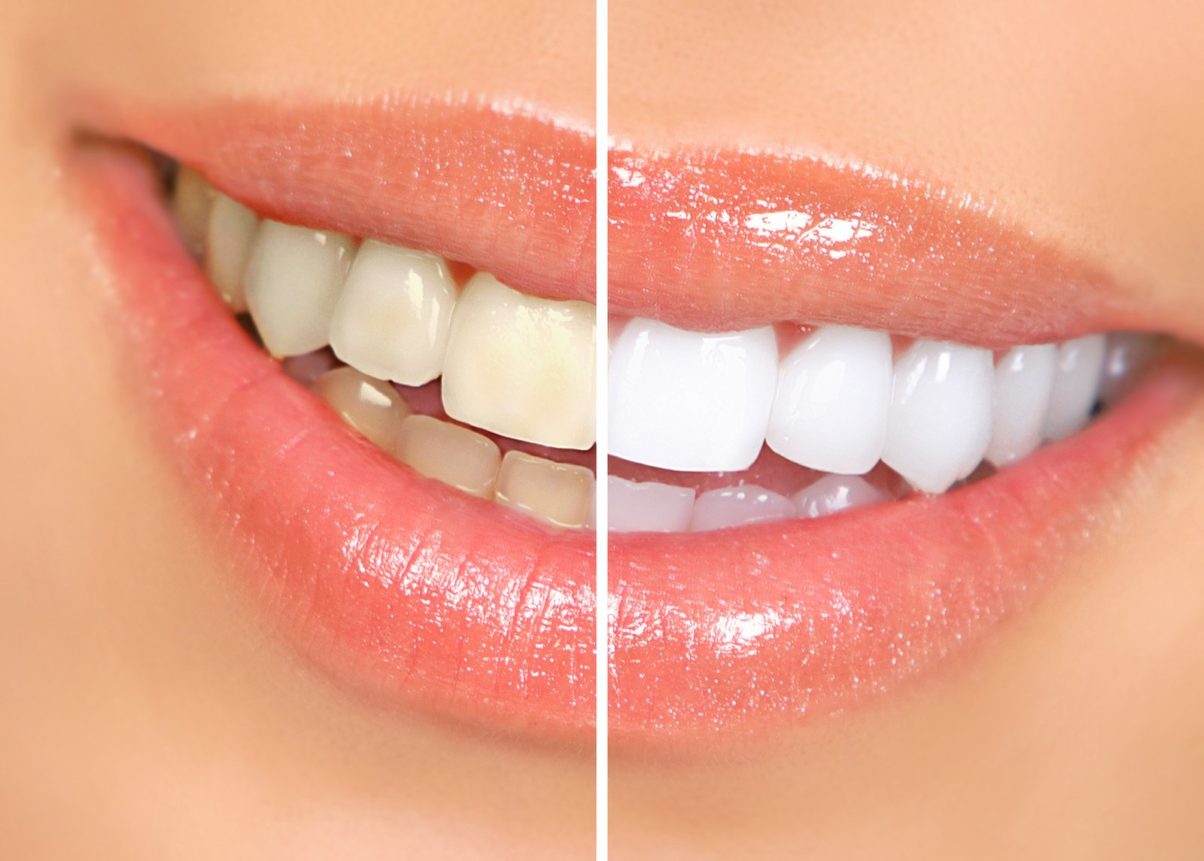A number of things can promote teeth stains, including dark-pigmented foods and beverages, medications, trauma, aging and genetics. Depending on the cause and extent of the staining, dentists can use a variety of techniques to improve the appearance of a person’s smile. If you are unsatisfied with the color of your teeth, learn how to remove teeth stains safely.
- Whitening toothpastes: Although just about every type of toothpaste contains abrasive ingredients designed to help to scrub away stains, whitening toothpastes also contain polishing agents or special chemicals that make them more powerful. With regular use, these products do have the potential to lighten teeth a few shades, depending on the cause of tooth discoloration.
- Whitening strips: Applied directly over teeth once or twice per day for about two weeks, these peroxide-based tooth bleaching products can help improve the appearance of relatively mild tooth stains. The products are available over-the counter as strips or as a gel which you can apply to your teeth using a brush.
- At-home bleaching trays: Intended to improve mild to moderate tooth stains, this whitening method involves a plastic tray filled with a bleaching paste or gel that has a peroxide base. The tray holds the paste or gel against the teeth for a specified amount of time every day for a month. Available over-the-counter for between $150 and $300, at-home bleaching trays can offer decent results for patients with relatively mild tooth stains; however, they are not as powerful as professional treatments. Custom at home trays from your dentist are more effective than whitening trays you can purchase in stores, as they are designed to fit your mouth and prevent gel from leaking out to the gums.
- In-office bleaching trays: These treatments involve bleaching solutions that are much stronger than the gels and pastes used in at-home kits. Dental professionals also often use heat, light or a combination of each to speed up or intensify the whitening process. In many instances, teeth will get from three to eight shades brighter, especially if the patient schedules multiple office visits. Some dentists also offer rapid whitening techniques, such as the Zoom!® system, which utilizes ultraviolet light to enhance the effect of the whitening gel.
- Porcelain veneers: If tooth discoloration is severe or caused by genetics and aging, a more extensive treatment may be required. When tooth discoloration does not respond to traditional teeth-whitening methods, dentists will often recommend porcelain veneers. Bonded to the surface of teeth, these thin sheets of porcelain or tooth-colored resin provide a whiter smile that looks totally natural. Veneers are an especially good option when tetracycline, fluorosis or trauma has caused the dentin within teeth to grow dark.
While many people recommend natural teeth whitening remedies, these are typically ineffective and can even cause damage. Our dental offices can provide you with your custom whitening trays and whitening treatments. For instance, solutions comprised of strawberry, lemon and/or baking soda have been shown to reduce the surface hardness of teeth by as much as 10 percent. With this in mind, be sure to talk to your local dentist about your whitening options and the safety and efficacy of any whitening option before you use it on your teeth.



 Previous Article
Previous Article